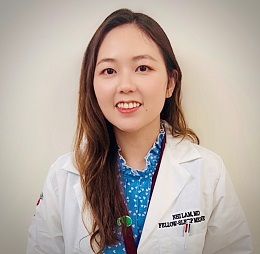Article
Returning Patient Rate Remains Low After Inpatient Obstructive Sleep Apnea Diagnosis
Author(s):
With a high rate of lost patients, effective treatment is compromised regardless of the success rendered by unattended portable sleep studies, investigators explain.
Nhi Lam, MD
Credit: University of Chicago

Even when obstructive sleep apnea was successfully diagnosed during an inpatient portable sleep study, a significant percentage of patients were lost to follow-up. Data featured at SLEEP 2023 in Indianapolis, IN, showed almost half of patients diagnosed did not schedule a follow up visit.1
Furthermore, the investigation reported a high "no show" rate among diagnosed patients who did have a scheduled follow up visit, with about half of them never completing the visit.
Portable sleep studies have emerged as a convenient way for patients to be continuously monitored while unattended and are successful in diagnosing obstructive sleep apnea. According to the study, this method can enable earlier intervention.
However, the patient’s treatment adherence and commitment to attending follow up visits are crucial. In this study, Nhi Lam, MD, and investigators from University of Chicago Medical Center aimed to determine the rate of hospital follow-up among patients diagnosed with obstructive sleep apnea through a portable inpatient sleep study.
The retrospective review included adult inpatients who underwent portable sleep studies between 2013 - 2022. The team assessed individual patient charts and collected demographic information such as age, gender, and race, as well as co-morbidities and length of hospital stay.
A total of 104 patients were included in the analysis. The majority of patients were middle-aged, with a mean age of 55.2 years (SD, 15.9). The racial distribution indicated that 68.2% of the patients were Black (n = 71), while 62% were men (n = 64). A minority of patients identified as Hispanic (n = 7, 6.7%).
Data from sleep studies looked at total recording time, total estimated sleep time, overall apnea-hypopnea index (AHI), and nadir oxygen saturation.
Among the sleep studies conducted, 91.3% (n = 95) had an AHI ≥ 5/h, indicating a high prevalence of obstructive sleep apnea. The mean AHI among these patients was 42.8 events per hour (SD, 31.4), placing them in the severe range of disease.
Investigators noted significant oxygen desaturations were observed, with a mean nadir oxygen saturation of 77.1% (SD, 10.6%).
For the primary outcome, the percentage of patients with a positive sleep study for obstructive sleep apnea (AHI ≥ 5/h), and a scheduled follow up appointment was 60% (n = 57) at the time of discharge.
The percentage of patients diagnosed with a scheduled follow up appointment and completed their outpatient visit was 54.4%, as reported by the secondary outcome.
The ability to retain patients in outpatient treatment is imperative, investigators acknowledged. With a high rate of lost patients, effective treatment is compromised regardless of the success rendered by the diagnostic method.
Further studies should be conducted to explore strategies for enhancing patient engagement and ensuring continuity of care for individuals diagnosed with obstructive sleep apnea in inpatient settings.
“The percentage of patients lost to follow-up is high despite diagnosing (obstructive sleep apnea) successfully with an inpatient portable sleep study,” they wrote. “Close to half of the patients had no scheduled follow-up, and the “no show” rate remained high (close to 50%) in those who had a sleep medicine appointment.”
References:
- Lam N, Singh M, Lastra A. 0941 Sleep Apnea Testing in Hospitalized Patients: Are Patients Following Up?. SLEEP. 2023;46(Supplement_1):A415.





